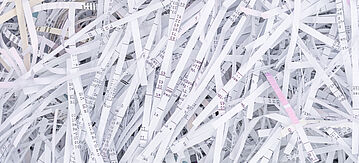Waste paper

Waste paper is a valuable resource. According to an ecological assessment carried out by the Federal Environment Ministry (BMU) and the German Environment Agency (UBA), waste paper products (recycled paper, cardboard) cause significantly less ecological damage than paper products made from fresh fibre. For this reason, the Blue Angel eco-label may be awarded to recycled paper products.
The most important paper product segments by volume are:
- products made from graphic paper, such as newspapers, other printed products, and office paper, and
- products made from packaging paper, such as sales packaging, transport packaging or secondary packaging.
In 1994, the graphic paper industry made a voluntary commitment to the BMU to gradually increase recycling of graphic waste paper to 60 percent by 2000. The actual trend in the amount of graphic waste paper recycled has topped this commitment by a wide margin.
In light of this positive trend, the industry updated its voluntary commitment in 2001 and guaranteed a permanent recycling quota of around 80 percent. This commitment has been consistently met (see statistics), thus confirming the great importance attached to waste paper recycling in Germany and ensuring that product responsibility is assumed as laid out in the Circular Economy Act (Kreislaufwirtschaftsgesetz).
In order to reduce the volume of packaging waste, the German government adopted the Packaging Ordinance (Verpackungsverordnung) in 1991, an effective step towards ensuring that producers and distributors accept their responsibility for products. This considerably improved the recycling of paper packaging. This policy was continued with the Packaging Act (Verpackungsgesetz) that came into force in 2019 and replaced the Packaging Ordinance. According to the Packaging Act a recycling quota of 85 percent currently applies to sales packaging made of paper. From 2022 a recycling quota of at least 90 percent is even to be achieved.
